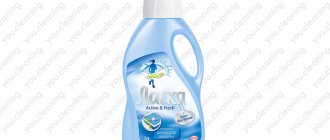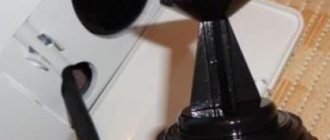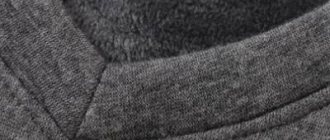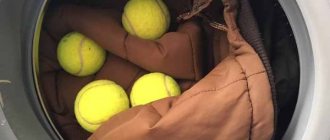Synthetic material is widely used for sewing clothes and other textiles. Polyester is characterized by low cost, positive characteristics - ease of care, practicality, durability. Every person has something in their wardrobe that at least partially consists of this material. You should familiarize yourself with the basic care rules - how to wash polyester, dry it and remove stains.
Modern clothes
Polyester is present in not only clothing, but also things. The material is of synthetic origin and is made from polyester fibers. He has good qualities. Items that have a label stating that they are 100% polyester are not that common.
It is usually included in other fabrics to give them strength, elasticity, waterproofness and wearability. A mixture of wool or cotton with regular polyester is a high-quality material that never shrinks and washes well.
Polyester is used to make beautiful tracksuits, scarves, winter jackets, swimsuits, raincoats and much more. These things are durable. Plus, they don't need to be ironed. This is a very important advantage when it comes to outerwear. The popularity of things made from artificial material makes us think about how to wash polyester in a washing machine.
This is interesting: How to clean suede at home: quickly and effectively
How to properly deal with stains on polyester products?
Many housewives note that old stains from synthetic clothing are easily removed with a mixture of borax and lemon juice. To do this, the stains are first treated with a 10% borax solution, and then a solution of lemon juice in a proportion of 1 tsp is applied to them. juice for 1 tbsp. water. Next, the items are rinsed in running water and completely washed by hand or in a washing machine.
Another well-proven method of dealing with stains is to thoroughly cover the dirty area with salt and leave it like that for 30 minutes. After this, the clothes are also washed entirely.
Note! It is not recommended to rub dirty areas with brushes or other rough objects. An ordinary household sponge is ideal for such purposes.
Hand wash polyester
Labels and labels
First of all, you need to read the label of the item you are going to wash; it may indicate:
- material structure;
- how to clean polyester (by machine or by hand), recommended water temperature, bleaching and dry cleaning options;
- drying requirements and spin modes in automatic machines;
- ironing conditions for the product.
Many people are unfairly afraid of hand washing because they don’t know how to do it correctly. There is nothing complicated in this process, you just need to follow certain rules:
- Monitor the water temperature - it should not exceed that recommended by the manufacturer. To monitor, place a regular baby bathing thermometer in the basin;
- Arm yourself with a soft rag - it should be used to rub dirty areas. Avoid brushes, sharp jerks and any other intense impacts - they can lead to deformation of the canvas;
- When the process is complete, do not wring out the item. Depending on the size and weight, place it on hangers or place it on a flat surface.
Advice: if the clothes are saturated with the smell of sweat and do not have any other contaminants, then in this case you can get by with soaking and rinsing in conditioner.
It is important to strictly follow the instructions for use and remember that things made of polyester:
- do not like high temperatures (too hot water or boiling), at which they can become deformed and change color;
- cannot be treated with bleaching compounds;
- should be dried in the shade or at home, since bright sun damages the structure of the material.
Permissible water temperature when washing polyester
Everything is quite simple - you just need to remember the composition of the material, which includes both natural and synthetic components. As you know, the main enemy of artificial fabrics, in addition to harsh detergents, is high temperature. Manufacturers of fabrics with this composition indicate that washing in water heated to 40 degrees or higher promotes rapid splitting of the fibers. Outwardly, this will not have the most pleasant consequences, not to mention the fact that there will be no question of any practicality of the thing.
Therefore, the optimal condition for washing is to use water at room temperature or slightly higher/lower - about 20–25 degrees.
Interesting fact: cold water does not harm things made of polyester fabric in any way, without affecting its properties, so if you need light rinsing or removing minor dirt, a temperature of around 10-15 degrees is quite suitable. However, it will be difficult to use washing powder or detergent in such water - they will simply dissolve too slowly. Therefore, if there are deep, stubborn stains, it is better, following numerous instructions in this regard, to use water at room temperature.
Washing a down jacket
Down jackets are in demand among consumers and this is no coincidence; they are practical to wear and economical. Many products are made from natural down, and the top is covered with polyester material. Therefore, washing such things is no less important than their practicality.
The main thing is how to wash them correctly in a washing machine so that the down jacket lasts a long time. In fact, there are no difficulties in this; it is enough to know simple rules:
- Do not forget that there is insulation inside, and to prevent it from forming lumps, you should set the “Delicate wash” mode.
- It is enough to ensure water heating from 30 to 40 degrees.
- You should not use powder; the best option would be a liquid product.
- It is recommended to rinse twice. This is just in case that there are no traces of the product left.
- Setting the spin speed to low is also important.
- Add conditioner before rinsing a second time. Only this product will help restore the shape of the filler.
- After the item has been removed from the drum, it must be placed on a previously prepared horizontal surface. A table can be great for this.
- Manually straighten the down filling and at the same time give the jacket its previous shape.
- During the drying period of the product, fluff should be fluffed after a while.
In order for the jacket to return to its original condition, it is recommended to hang it with the hem up.
General recommendations
There is no need to separate items with additives and 100% polyester items before washing. Please note that synthetic fabrics cannot:
- wash in very hot water or boil - this precaution is necessary to ensure that the item does not shrink and lose the brightness of its colors;
- use any bleaches, as they destroy polyester fibers;
- dry on hot radiators.
If you want to figure out how to wash polyester in an automatic washing machine, carefully read the information on the product label. It contains complete information about cleaning methods. You need to listen to such recommendations. As a rule, manufacturers indicate information about what type of washing should be used.
The temperature indicator is no less important. If you cannot use temperatures higher than those indicated on the label, you should listen to this information. Violation of the washing regime will lead to undesirable consequences. Please be aware that your winter jacket may become deformed. To prevent her from sitting down, you will have to adhere to the specified standards.
Interesting! How to wash pillows in a washing machine
Is it worth using an automatic machine?
Of course, polyester is machine washable. But this process is best carried out as manufacturers recommend using the “Delicate Wash” option. Of course, you first need to study what is written on the label, and then make a decision.
Modern machines can be equipped with pre-soaking functions, which is also very convenient for owners, especially if the dirt is old or deeply penetrates the fibers. This is a unique option that not only saves time, but also allows you to clean things from dirt more efficiently. The main thing is that there is no need to manually remove the stain, because it will dissolve itself.
All clothes are sorted by color. The choice of detergent should be given to liquid detergents or non-aggressive powders to prevent fabric damage. When spinning, it is not recommended to set high speeds so that the item does not wrinkle.
Manually
Most people try to avoid hand washing polyester items because they are afraid of making mistakes and harming the material. There is no difficulty here. You just need to monitor the water temperature, which a regular thermometer can help with, and do everything consistently and carefully.
Hand washing requires the following steps:
- Fill a basin with warm water (20–30°C), stir the powder in it.
- Wash the item, being careful not to make too sudden movements. Problem areas can be wiped with a soft cloth to remove all dirt.
- Rinse clothes in clean cold water and wring out lightly.
- Hang in the shade so that the sun's rays do not fall on your clothes.
Tips for hand washing - video:
After drying, the item can be ironed, but for this you should set the mode for delicate fabrics. If there are no such settings, then you just need to set the temperature to 120°C, but no more.
Some tips
To keep polyester items bright and looking as if they were new, you should take into account some tips from professionals:
- Initially, sort your clothes based on color or fabric type.
- Fasten all buttons, zippers and take out everything that was in them from your pockets.
3.If clothes require more delicate washing, they should be placed in a separate case.
4.If a stain is found on the fabric, it is recommended to remove it before starting washing.
- If necessary, you can set the “soak” or “pre-wash” option.
- The ideal washing products would be shampoo, gel or non-aggressive powder.
- Select manual or delicate mode, and if you wear sportswear, you can use the special “sport” program, if available.
- Set the spin mode to a speed not exceeding 800 to prevent the item from getting wrinkled.
- When the drum load is at maximum, you should set the “extra rinse” function.
- To add volume or softness to the fabric, add conditioner.
If the item is classified as delicate, then hand wash is used; in this case, there is no need to rush to put the laundry in the machine.
If you need to wash outerwear, then you need to approach it with due care; machine washing can only do harm. It is recommended to wash the coat by hand, and if wrinkles have formed, they can be easily removed. Unlined jackets can be washed in a machine, and such washing will not cause deformation of the fabric.
In the washing machine
Washing polyester clothes in a washing machine is much easier and faster. However, you can’t just throw it there, turning on any mode, because this will negatively affect the general condition of the material and lead to a rapid deterioration in the appearance of the fabric. Before you start washing, you should familiarize yourself with simple rules:
- All clothes need to be sorted by color and type of fabric, creating several groups of items that are as close as possible to these parameters;
- Thin clothes, such as summer translucent T-shirts, are best placed in a separate laundry bag;
- All zippers must be fastened;
- If there are stains on things, they need to be removed before washing;
- The detergent should be selected based not only on the material, but also on whether the clothes are colored or not;
- The spin mode cannot be set too powerful - 800 rpm for such material will be the maximum permissible value;
- It is best to supplement the wash with a special conditioner so that the clothes remain soft and beautiful;
- For washing itself, only use the delicate cycle at 30°C.
Once all this is taken into account, you can wash the dirty polyester. The process is quite simple and no different from washing other delicate fabrics. What to do:
- Place all clothes in the drum, taking into account the rules presented above.
- Pour (or pour) the necessary products into the special compartment, also adding conditioner.
- Select delicate mode. If this is a sports suit, then you can use the appropriate mode.
- Set the spin speed to 400–800 rpm. Start the machine.
- Take out and shake the clothes, hang them in fresh air where the sun's rays do not reach.
- After drying, you can use the iron on the delicate setting.
Useful guide on using a washing machine - video:
Such clothes should not be wrung out by hand. This will not only help keep its internal structure intact for a long time, but will also eliminate the need for ironing, since crumpled folds will not appear on the clothes.
This is interesting: How to wash silk: 5 tips before washing, choosing a method and product
Is it possible to wash jackets?
Many people believe that if a jacket gets dirty, it can only be cleaned with light movements with a damp cloth. In fact, you can wash a polyester jacket without worrying about its appearance. To do this, some take them to dry cleaning or laundries, but everything can be done at home.
The process of washing a regular jacket, raincoat, as well as a jacket with padding polyester:
- Turn the jacket inside out and throw it into the drum.
- Pour in the powder and also add a suitable conditioner. If there is padding polyester inside, then you should use a special product called “Laska”.
- Turn on the mode for delicate clothes, selecting the minimum spin.
- Hang to dry on the balcony.
Such clothes retain their shape perfectly. Therefore, there is no need for additional ironing or any other manipulations.
Washing a down jacket made of polyester with natural feather insulation will not be more difficult. To do this you will need to do the following:
- Place the jacket in the drum.
- Pour liquid powder into the compartment for special products.
- Run the machine in delicate mode with rinsing, but without spinning.
- Additionally, run another rinse, adding the required amount of conditioner.
- Take out the jacket and hang it in the fresh air. While it is drying, you need to shake it every few hours to loosen the insulation.
- After the main part of the liquid has dried, the down jacket should be turned over so that it retains its shape and volume.
If you don’t want to use a washing machine, then no one has canceled hand washing. Even insulated down jackets can easily withstand it. To do this, you need to place the jacket in warm water, where the liquid powder should already be dissolved, wipe all contaminated areas with a soft rag or brush, wring it lightly and rinse three times in cool water, after which all that remains is to hang the item on the balcony until completely dry.
What is polyester, what properties does the fabric made from this material have?
This material means a synthetic fabric, the production of which uses a melt of polyethylene terephthalate and its derivatives.
To improve the aesthetic qualities of the finished fabric, polyester fiber is combined with other types of raw materials: nylon, elastane, cotton, viscose.
Wardrobe items made 100 percent of polyester, as well as mixed materials containing polyester, have the following properties:
- Long service life. Durable material is resistant to strong mechanical stress. It does not wear out and does not lose its original qualities even after numerous washes.
- Color fastness. The material is able to maintain color brightness throughout the entire period of operation. It does not fade when in contact with water and does not fade in the sun.
- Resistance to deformation. Polyester items, especially those containing nylon or elastane fiber, retain their original shape after repeated washing and strong stretching.
- Resistance to the negative effects of aggressive substances, as well as the development of pathogens.
- Low pillability (pellets do not appear on the product).
- Dust and dirt resistance. The fabric retains any type of contaminant on the surface, preventing it from penetrating into the fibers.
- Ease.
- No tendency to absorb unpleasant odors.
- Ability to dry quickly.
- Low creasing. Most wardrobe items do not require ironing.
- Availability. When producing polyester products, manufacturers focus on the average consumer.
- Moisture resistance.
- Easy to care for. If you follow the recommendations for washing items made from this fabric, they will not shrink or fade.
In addition to the positive aspects, clothes made from this fabric also have disadvantages:
- low air circulation in the fibers - due to difficult air exchange in polyester products, it is uncomfortable in hot weather;
- electrification - this fabric has a tendency to accumulate static electricity;
- there is a high risk of skin irritation;
- difficulty of staining;
- fear of high temperatures - when washed in hot water, polyester products shrink.
How to get rid of stains
A huge number of events can happen during the day, resulting in a dirty stain on your clothes. Coffee, dirt, food, traces of sweat - all this is very difficult to wash off.
If the stain appeared quite recently, you can try to wash it with clean, cool water, since polyester does not absorb various substances as quickly as many other materials. But in the case of dried tracks, this solution to the problem will be completely useless. However, don't despair. There are three ways to get rid of stains.
Stain remover
The first thing you should take to get rid of a stain is a regular stain remover. This safe product will help clean the item from any type of dirt without damaging the fabric. But it is important to choose a product that does not contain chlorine. It can be replaced with liquid soap.
How to clean things:
- Place the item on a horizontal surface.
- Apply the required amount of stain remover to the problem area. Wait 10 minutes.
- Rub the substance with the convex side of a tablespoon.
- Wash the item immediately.
Under no circumstances should you rub the product with your bare hands - this can cause serious damage to delicate skin.
Salt
Traditional methods always show high efficiency in eliminating most types of pollution. Salt will help to effectively and safely clean polyester from all stubborn stains.
Procedure:
- Apply a small amount of liquid to problem areas, moistening the fabric.
- Sprinkle salt on top. Wait about half an hour.
- Rinse off the remaining grains of salt along with all the dirt with cool water.
- Use the machine wash method described above.
If this method did not help, then the next one will definitely cope with the task.
Sodium tetraborate, citric acid
A radical way to clean clothes from various dirt and old stains. It should be used with extreme caution.
How to use:
- Apply sodium tetraborate (10%) to a cotton pad or soft cloth.
- Use them to treat the contaminated area.
- Dilute citric acid (1 spoon of powder per 100 ml of water).
- Additionally, treat the stain with this solution using a cotton pad.
- Rinse the treated area under cold water.
After these steps, the item must be washed immediately.
Features of the material
Polyester is a synthetic fabric made from polystyrene. Polystyrene is a product of petroleum refining. Fiber is obtained from the liquid fraction after purification and processing. In the textile industry, it is used to make fabric used for sewing clothes and equipment. According to the characteristics of 100% polyester, it is close to cotton fabric, and in appearance it resembles pure wool.
Advantages of the material:
- wear-resistant;
- does not fade from the sun;
- moisture resistant, dries quickly;
- does not wrinkle when cutting and sewing;
- pleasant to the skin;
- does not absorb odors.
Disadvantages of synthetic products:
- low hygroscopicity;
- high density (rubbed upon contact with skin);
- become electrified;
- attract dust;
- flammable;
- lose their shape at temperatures above 40 degrees.
To improve the quality of the fabric (firmness, elasticity, density), cotton, wool, viscose, and elastane are added to polyester.
The following are sewn from polyester materials:
- thermal underwear;
- sports;
- outerwear;
- home textiles (tablecloths, curtains, bed linen, carpets);
- equipment (backpacks, tents);
- the wrong side of suits, dresses, jackets, coats.
Synthetic fibers are used as filler in down jackets and jackets (holofiber).
Subtleties of washing polyester items
Not all items behave the same after washing, especially for outerwear or delicate items. Next we will talk about the features of washing some things.
Coat
Polyester coats can be machine washed using the delicate or synthetic cycle. The optimal water temperature is 30°C. To thoroughly rinse the powder out of a thick cloth, use an additional rinse. The coat is dried on a hanger and then steamed using a damp cloth. If there are natural fibers in the fabric, it is not recommended to wash it frequently to avoid pilling.
Jacket
The rules for washing a jacket are similar to coats. Before loading into the drum, the pockets are checked, decorative elements are unfastened, and the jacket is turned inside out. If there is a filler, special products such as “Weasel” or “Vorsinka” are used. The volume of the product will allow you to preserve the air conditioner. To prevent the product from becoming wrinkled, a minimum number of spin speeds is used.
Down jacket
If the jacket has natural feather inside, it can also be machine washed. However, there are some features:
- Only liquid powder is used;
- the thing does not get out;
- an additional rinse with conditioner is used;
- the down jacket is dried on hangers;
- Every few hours the product needs to be shaken to fluff up;
- After drying, the down jacket should hang upside down for some time to maintain its shape.
Dress
Dresses and other lightweight clothing can be washed either by hand or in the washing machine; it is important to follow the instructions on the label. Temperature conditions up to 60°C are allowed. Items are sorted by color and the delicate mode is set. If there are stains, the product is pre-soaked to prevent wrinkles from appearing; the dress is not wrung out.
Thermal underwear
To prevent thermal underwear from losing its properties, it also needs to be washed following several rules. The maximum water temperature is 40°C. Linen is washed inside out; no stain removers, solvents, or chlorine-containing products are used; thermal underwear is not dry-cleaned. After washing, the product is wrung out, but not twisted. Drying is done away from sunlight and heat sources.
Blanket
Washing a blanket with synthetic filling can easily ruin its shape. You can wash the blanket in the machine if its capacity is more than 5 kg. Only liquid powder is used and the delicate mode is set. Additional rinsing will be required, the number of spin speeds used is minimal. After washing, the blanket is laid out on a smooth surface and periodically turned over to dry evenly. If the blanket is oversized, then it is washed in the bathroom by hand, pre-soaking for 15 minutes is required, then the fabric is cleaned with a soft sponge.
Curtains
Synthetic curtains can be easily washed in the washing machine. To eliminate dust, a temperature of 30⁰C is sufficient. When washing by machine, you can discard the powder; when washing by hand, it can be used in minimal quantities. To prevent wrinkles from appearing on the curtains, do not wring them out. When the water has drained, they can be hung in their original place. Most curtains do not require ironing; others are ironed through the fabric at the lowest setting.
Backpack
To wash a polyester backpack, all decorative elements are removed from it and immersed in a machine drum. Use delicate or manual mode. To avoid the backpack losing its shape, it is not wrung out. If you only need to wash the handles or straps, you can use a soap solution and a soft brush or sponge.
Polyester fabric - briefly about properties and applications
For the most part, everyone is accustomed to thinking that polyester is used for sewing skirts, trousers and similar clothing. This is true, but the list of things in which polyester fabric is the main component does not end there - it also includes coats and jackets, and sometimes you can find polyester umbrellas on sale. The material has an antistatic effect - this was achieved thanks to the ideal combination of natural and synthetic fibers during the manufacturing process. This was also the reason for the extraordinary strength of the fabric.
Interesting fact: to care for a polyester product, it is always important to know exactly whether it is 100% natural or contains fiber impurities - wool, viscose, cotton, etc. In each specific case, the basic washing rules - permissible temperature conditions and other important recommendations will be displayed as an inscription on the label, on the collar, on the belt or on another part, depending on the type of product.
You must immediately understand that the main enemies of synthetics are temperatures above 40 degrees Celsius and aggressive cleaning agents that destroy their structure with each new wash. Accordingly, it is necessary to wash such items by machine only when using water at room temperature, with a permissible deviation in any direction of only a few degrees, as well as soft washing powder.
Plus, not all polyester items are machine or hand washable. For example, it is preferable to dry-clean jackets filled with this material in order to avoid rapid deformation and, as a result, acquiring an unpresentable appearance.
Polyester has the following features:
- high strength and wear resistance;
- light weight;
- ability to perfectly maintain shape;
- practically does not wrinkle;
- The fabric is resistant to light and heat. Polyester is resistant to ultraviolet radiation, however, the fabric should be protected from direct sunlight so that the paint does not fade;
- easy to wash;
- dries quickly;
- resists stains, it is difficult to stain the material;
- has antistatic properties;
- does not require special storage.
Based on the listed characteristics, it is logical to formulate rules for caring for products made from this material. Items made from polyester can be washed just like items made from any other fabric. Let's look at the labels on things.
Rules for drying and ironing fabric
- We wash things with holofiber by hand
- products made from synthetic fabrics are dried in well-ventilated areas, avoiding exposure to direct sunlight;
- Drying near heating appliances, gas stoves, or on central heating radiators is unacceptable;
- It is not recommended to wring out washed items; just hang them over the bathtub and the water will drain on its own;
- You can remove excess moisture by wrapping the wet item in a terry towel and squeezing it slightly;
- dry clothes by laying them flat on the dryer;
- things made of polyester fiber practically do not wrinkle, but if there is a need to iron clothes, set the iron to the “silk” mode (too hot metal will instantly melt the fabric);
- Clothes should be ironed from the wrong side, using smooth movements, without excessive pressure on the fabric.
If you doubt that you can wash a soiled item yourself or there is a need to clean bulky items (plaids, blankets, curtains) from dirt, you can use dry cleaning services. Professional help is indispensable if you need to clean clothes from stubborn stains - qualified specialists from such consumer service companies will help return things to their original appearance without causing harm.
The article has been verified by the editors
Ironing polyester
An icon in the form of a schematic drawing of an iron with one dot inside. Items made from this material most often do not need to be ironed, except in cases where the fabric contains mixed synthetic and natural fibers, or if, as a result of a violation of the washing regime, the material jams in the machine drum.
Smooth out the unevenness of the lavsan fabric with an iron heated to 110 degrees. In some cases, cotton cloth is placed between the sole and the fabric to lower the temperature of the plate and not spoil the item. A polyester product can “shrink” if it is overheated. The melting point of the fabric is 200 0C. When values close to critical are reached, polyester fibers begin to break down.
Caring for polyester clothing
In order for products made from polyester fibers to last as long as possible while maintaining a presentable appearance, you should take into account the washing rules and choose the appropriate drying and spinning mode. At the same time, detergent compositions must be of the highest quality, designed for delicate fabrics. They should not be treated with boiling water or exposed to high temperatures.
To make the surface look well-groomed and maintain its shape, you will need to use special rinses. They also provide an antistatic effect. Drying is carried out in the shade, and if you use a dryer, you will need to choose a gentle temperature. If you are washing winter items, you must choose a gentle temperature setting. When caring for products made from pure down, you need to immerse silicone balls in the drum of the washing machine, which will prevent the filling from whipping into one solid lump.
There are no particular difficulties in caring for things made of polyester. The main thing is to avoid using hot water and aggressive detergents, including bleaches. Following simple recommendations and rules will extend the life of synthetic clothing and make it neat.










